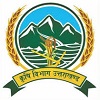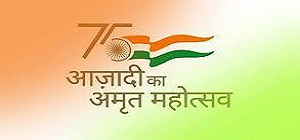Uttarakhand State Farmers Commission
The Uttarakhand State Farmers Commission Bill, 2016 was passed by Government Order No. 355, dated November 30, 2016, of the Legislative and Parliamentary Affairs Department, Government of Uttarakhand. The Uttarakhand State Farmers Commission consists of one Chairperson, two Vice-Chairpersons, and seven Members for a two-year term. In addition, the Vice-Chancellor of Pandit Govind Ballabh Pant University of Agriculture and Technology, Pantnagar, will be a Member, the Director of Agriculture, Uttarakhand, will be the Member Secretary, and the Director of Horticulture will be a Member.
The functions of the Uttarakhand State Farmers Commission are as follows:
1. To periodically review the current state of agriculture in Uttarakhand, prioritizing the strengths and weaknesses of different categories of farmers in the conditions of different agro-climatic and mountainous subdivisions, and to formulate a comprehensive strategy for sustainable and equitable development in Uttarakhand.
2. Analyze the reasons for the decline in farmers’ incomes and suggest ways to increase farmers’ incomes through market-oriented crop diversification, improved marketing systems, simple and regular value addition, and agro-processing.
3. Suggest ways to increase productivity, profitability, and sustainability of the state’s major farming systems, taking into account agroecology and agro-climate, accessibility, and technology.
4. Suggest a viable and compatible crop (involving the Horticulture Department) for integrating animal husbandry and fisheries.
5. Suggest a viable and compatible crop (involving the Horticulture Department) for integrating animal husbandry and fisheries and enhance coordination between agriculture and allied departments.
6. Suggest ways to increase income and employment opportunities in rural areas through diversification and sustainable technology (including IT) by enhancing the synergy between technology and public policy. To improve weather, financing, online trading, training, and marketing.
7. To assess the utilization efficiency of existing agricultural inputs, to assess and improve the efficiency of the system for subsidized distribution of seeds, fertilizers, and agrochemicals.
8. Review the current level of water use in agriculture and make recommendations for equitable use, efficient use of ground and surface water, and rainwater conservation measures to increase agricultural productivity.
9. Suggest ways to promote local and traditional crops as important.
10. Suggest ways to increase the quality and price competitiveness of agricultural produce to make them globally competitive.
11. Suggest major reforms in agricultural policy to encourage investment in agricultural research, promote rural credit to benefit small and marginal farmers, and ensure economic growth is linked to agricultural progress, leading to a productive and healthy life for rural families.
12. Engage and retain educated youth in agriculture, and suggest technical methods to achieve this objective.
13. Other related issues suggested to the Commission by the Government.
14. Promote private participation in agriculture.


